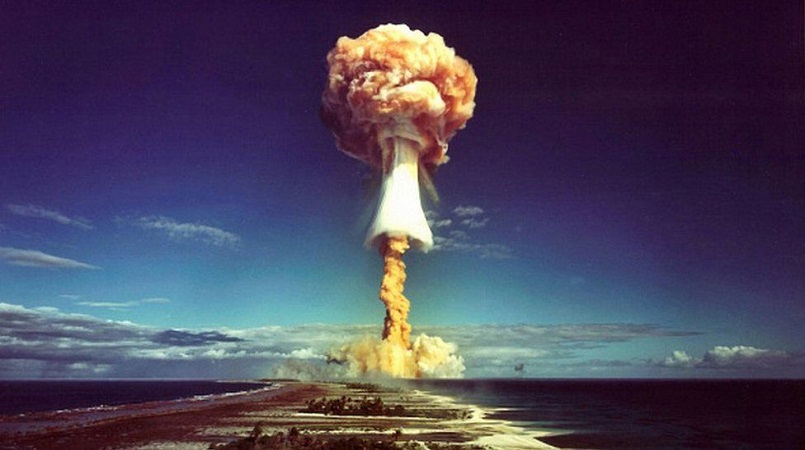
France concealed the true impact of its nuclear tests in the Pacific from the 1960s to the 1990s, a study has said.
Researchers used declassified French military documents, calculations and testimonies to reconstruct the impact of a number of the tests.
They estimated that around 110,000 people in French Polynesia were affected by the radioactive fallout.
The number represented "almost the entire" population at the time, the researchers found.
French Polynesia, a French territory made up of hundreds of islands and atolls including Tahiti, was the site of dozens of nuclear tests over 30 years.
Over the course of two years, researchers analysed around 2,000 documents released by the French military and recreated the impact of "the most contaminating" of France's nuclear tests carried out between 1966 and 1974.
The study was carried out in collaboration between French news website Disclose, researchers from Princeton University and British firm Interprt.
The 41st test took place over Mururoa Atoll on 17 July 1974, when the atomic cloud took a different trajectory than planned. Some 42 hours after the test codenamed Centaur, "the inhabitants of Tahiti and the surrounding islands of the Windward group were subjected to significant amounts of ionising radiation", the report says.
The area was home to 110,000 people and Tahiti's main city, Papeete, alone had a population of 80,000.
According to the investigation, the resulting radiation from the French tests was between two and 10 times higher than estimates given by France's Atomic Energy Commission (CEA) in a 2006 report.
One reason, according to the findings, is that the CEA "did not always take into account the drinking of contaminated rainwater" when calculating the dose of radiation individuals were likely to have been exposed to.
Catherine Serda, who was a child at the time of the tests, told France Inter radio that eight members of her family contracted cancer. "This is not normal. Why do we have so much cancer there?"
The CEA study was used as the basis for determining whether people were eligible for compensation from the French government.
The head of France's nuclear victims compensation committee, Alain Chrisnacht, told French media that the fallout over the Tahiti area had already been documented and a large number of requests for compensation had been agreed.
The report, however, said only 63 Polynesian civilians had received compensation so far.
